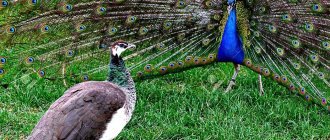There are many good structures in the Qi Men Dong Jia technique, but this one is traditionally the most loved by all practitioners and clients.
Firstly, she is one of the strongest. Its activation contributes to obtaining results without effort, a favorable outcome for any business and goal, happiness in all matters.
Therefore, if you need an easy solution to any matter, or the fulfillment of a wish, or an increase in luck, be sure to use it.
Secondly, the structure is static; walking in this direction does not activate it. All that is required is to simply sit in the desired sector, without leaving it, for two hours. It’s because of its simplicity that many people adore it—it’s not a walk you have to go on, and it’s not about placing any objects. Effort is minimal.
However, to get the maximum benefit, there are still rules.
1. Sitting for 2 hours means taking a place in the specified sector 3-5 minutes after the start of the two-hour period. Just sit down (or lie down). And spend the entire 2 hours in this position. That is, you cannot leave the sector. We left - there is no point in going back.
In summary, you need to make sure that nothing prevents you from staying in this sector: take your phone, papers with you, warn other people, etc.
2. The closer to the outer perimeter of the apartment or house you are located, the better. In simple terms, the closer to the wall, the better.
3. It is better to look in the direction opposite to the indicated part of the world. That is, if you are sitting in the southwestern sector, it is better to look to the northeast.
4. You can do anything. But it’s better to do something related to what you want: for example, articulate your goal. It’s great to write plans, review goals, make important calls, notes - in general, the more usefully you spend this time, the better.
However, even just being in this sector energizes you. In my practice, there were cases when the Bird came at night. I set the alarm, woke up and went to bed for 2 hours in the right place. It works too.
How to perform the Bird Falling into the Nest ritual?
Everything is very simple! At a certain time you need to sit (lie down) in a certain sector of your apartment and spend 2 hours in it. You need to be located near the outer wall of your apartment (the one behind which the street or your neighbors are located). In this place, the magical energy of luck circulates much more actively!
For two hours you can do whatever you want! You can chat on the phone, surf the Internet, watch TV, or even sleep. The ritual will work in any case, and you will receive your pleasant surprise. However, if you need assistance or a magic kick in some matter, spend this time usefully! For example: - Do you need a job? Send your resume, look for vacancies. — A successful project? Devote time to work. — Excellent grades? Get busy studying. — Wish fulfillment? Visualization and speaking your dreams out loud should help. — Success everywhere and everywhere? Plan, write down your goals on a piece of paper.
Some people actively use this time to participate in various lotteries or stock market games and claim that activation bears fruit.
Anastasia Volkova for the website Dreams Come True
A bird falling into a nest is one of the cool activations that helps make wishes come true. Do you like to dream and make a wish map?
We offer you an excellent way to enhance the energy of your most cherished desires and help them come true faster. This is a simple but very effective technique for fulfilling desires.
Properties of the structure "Bird falls into the nest".
This is one of the most popular structures for attracting good luck and getting results without effort. Qi Men structure “Bird falls into a nest” (“Bird falls into a cave”) – designed to activate Qi Men indoors. Activation "Bird" gives quick and easy results.
This Qi Men Dong Jia structure has several different names:
- The bird falls into the nest.
- A bird falling into a nest.
- The bird falls into the cave.
- The bird crawls into a hole.
In our Qi Men Dun Jia calculator, the “Bird” structure is marked with a special icon for quick search.
Contains strong potential for success. It means receiving rewards and profits without effort. Desires and aspirations are fulfilled easily and quickly.
- Harmonizes the energy of the room. Gives luck, improves relationships, improves mood, relieves aggression.
- Most often it brings easy money, chances to realize your plans easily and quickly, or random money. The “Bird Falls into a Nest” activation brings pleasant surprises, random gifts and unexpected money (even something you never thought to ask for). But this luck is one-time and short-lived. And it is not at all necessary that it will be expressed in money.
- Suitable for career advancement, profitable projects, litigation, construction, weddings and all positive matters.
- You can use this activation for any matter that is related to improving your personal life or improving your financial wealth. But this activation has one feature - you need to be able to retain the luck you attract. Be careful not to miss the opportunity.
Many people like to activate the “Bird” structure, because everyone wants to get something good without making much effort. This is understandable - you don’t need to do anything, you just need to be in the right sector and think about what you want to get. You can watch TV, read, talk with loved ones. You can even sleep!
But it’s better not to sleep. This activation requires you to be attentive and focused on achieving what you want. It gives many favorable chances that you should be able to discern and use. Don't miss your opportunities!
This activation requires you to be attentive and focused on achieving what you want. It gives many favorable chances that you should be able to discern and use. Don't miss your opportunities!
The strength of the activation at different times is not the same and additionally depends on your period of luck. Therefore, the result of activation varies for different people and at different times. Sometimes new opportunities appear directly during the activation process, sometimes over the next few days.
The "Bird Falls into the Nest" structure is a combination of the Heavenly Trunk丙 Bing on the Heavenly Plate with the Heavenly Trunk戊 Wu on the Earthly Plate. And one of the 3 favorable Qi Men Gates should join this combination:
- Sheng Men,生-gate of Life (Birth)
- Kai Men,开—Gate of Opening
- Xiu Men,休—gate of Rest
This structure is most powerful in the spring and summer months.
The Bird structure in Qi Men can be activated for any purpose. It is only necessary to correctly select the favorable accompanying operators of the layout. However, the activation “Bird falls into a cave” manifests itself most strongly:
- To receive support in business and career.
- To strengthen finances and receive money.
- To strengthen and establish communication (left and personal)
- To speed up project development
- For help with health (searching for a doctor and treatment)
- For support in exams and tests of any kind.
- To search for patrons among superiors and obtain their support.
The peculiarity of the structure of “The Bird Falls into the Nest” is the ease of its implementation.
Activation of the “Bird Falls into its Nest” structure is carried out only indoors. This structure is not suitable for motion activation.
Installation of activators is not required. All that is needed is your presence in the desired sector.
Since this activation does not use any activators, you can carry it out even in those sectors where the unfavorable Flying Stars of the year and month are visiting. This is another reason why the “Bird Falling into a Nest” activation is so loved by many - it is simple and safe.
WHAT DO WE HAVE TO DO.
- Find the corresponding sector in the room (in a house, apartment, office, etc.).
- Place your favorite chair (sofa, chair, etc.) in this sector.
- Spend 2 hours in this sector.
- If you find the structure “A bird falls into a cave” in the layout of the month , then you can place a bed in this sector for the entire month.
To activate, at the specified time, you sit down in the desired sector of your apartment and spend as much time as possible in it, preferably the entire two-hour period. It is not necessary to activate at home. You can perform the “Bird Falls into the Nest” activation in an office or restaurant.
It is advisable to place yourself as close as possible to the outer wall of the apartment or next to a window. The closer you are to the outer perimeter, the stronger the activation impact.
During activation, you can do whatever you want. You can just read a book or watch a movie, you can have lunch or sleep. The main thing is not to leave the desired sector and think more often about what you want to get!
It is very favorable to make important calls at this time, think about activities to promote business and improve relationships, send a resume or deal with current work matters. While the “Bird Falls into its Nest” structure is activated, you can make requests for help, look for information, and contact your superiors. All this will be successful.
If you need support in entering a university or have to take exams, the Bird activation will also be useful to you.
Comments on the lesson:
You can purchase a list of all structures for walks, trips and activations for every day for the whole year here. All structures in the directory are divided by purpose so that you do not make a mistake in your choice. All adverse effects are excluded. There are detailed descriptions of use and precautions. All you have to do is find the time to activate the desired structure.
This course will help you learn how to choose the strongest activations for yourself.
To construct a Qi Men Dong Jia map, you can use an online calculator
A list of all available Qi Men courses is here
You will find separate free dates for activating the “Bird Falls into the Nest” structure in our Well-Being Calendar .
| I wish you a smooth and prosperous road to success, clear goals and long-term plans, reliable friendship, family happiness and prosperity, health, high income and constant good luck! Natalya Titova Consultant and teacher of Feng Shui, Zi Wei Dou Shu, Qi Men Dong Jia, author of the “Melody of Qi” project and the “Tools for Chinese Metaphysics” portal. |
About the attachment of birds to the nest, pretense and some mistakes
Will a bird leave its nest if a person disturbs it in it or touches the eggs? Simply touching the eggs will go unnoticed by the bird unless it is disturbed or the vegetation surrounding the nest is not too badly crushed. I have observed that birds that begin to lay eggs very early in the spring and, without being disturbed, usually lay three or four clutches a year, abandon the first clutches more easily than the last. This is probably explained by the fact that in the spring the gonads more easily resume the entire process of reproduction from the very beginning than in the summer, when the bird must already incubate and feed.
In general, the bird’s attachment to the nest varies among different bird species, depending also on external circumstances. If, for example, I just want to look at the clutch of a mallard duck, I approach the nest so that the duck notices me from afar, and I pass by it as if by chance. The duck, of course, sees me and shrinks instinctively, hoping to remain unnoticed. If I get too close, the duck will fly up and soon disappear from sight. Now I can safely take individual eggs to find out their incubation; then I put them back in the nest, cover them again with down and move away. The duck, meanwhile, is somewhere on the water, cleans itself, drinks, feeds and, as after a normal break in incubation, returns to the nest in the usual way. But if, having mistakenly mistook a mallard's nest for the nest of some rare species of duck, I secretly sneak up on it and try to unexpectedly grab the duck, then I will scare it and could ruin the whole thing. With a cry of horror, she will fly away in fear and will not return so easily. She has an idea of the connection between the nesting site and mortal danger. Something similar happens with our ordinary wood pigeon. Previous ideas about the lack of attachment to the nest in these birds do not correspond to the behavior of the pigeons that have recently settled in city parks. When I find a nest in a deserted forest, the frightened bird quickly flies away and never returns. However, in the zoological garden I can use a ladder to reach pigeon nests in order to observe the development of eggs and chicks; in this case, the reaction on the part of the bird can be twofold: the incubating bird either rushes down to the ground and then, fluttering its wings, moves away, pretending to be lame, or very reluctantly rises from the nest and remains sitting on the same or a neighboring branch until the person disturbed it the person will not leave. In both cases, incubation continues. These park birds are accustomed to the sight of a person and behave towards him as they would towards their usual, smaller enemies, or are not at all very alarmed by his presence.
In general, we can say that a bird that is incubating or warming its chicks always returns to its nest if it has not been terribly frightened. Where the legend came from that the birds recognize that a human hand has touched their eggs and therefore leave the nest, I cannot say. Birds cannot "smell" it. Most likely, this is a folk tale for children so that they do not touch the nests. I have already mentioned above that a brooding wood pigeon, in case of danger, pretends to be wounded. Anyone can make a similar observation when approaching a bush where there is a warbler’s nest. The bird will throw itself on the ground and, fluttering its wings, seem to move with difficulty in the grass away from the nest; this is a sure sign that there is a nest nearby, or perhaps a brood that has just emerged from the nest. The bird does all this completely instinctively; in this way she distracts the fox or cat away from the nest. Many birds do this, and from various systematic groups, for example, partridges, ducks, plovers, and cranes. In this regard, the question may arise: did such behavior characteristic of a particular species arise completely independently in each individual group, or was it present in all birds at a very early stage of their phylogenetic development, but then disappeared in some? Most often, such “pretense” is observed in birds that nest on the ground, or in those that nest very close to the ground, since only in this case can it be appropriate. In any case, one can hardly think that a crow robbing the top of a tree will pay attention to an old bird falling down and struggling there. To many, such behavior on the part of an adult bird seems extremely prudent. He believes that the bird deliberately seeks to deceive the fox in this way. This idea is contradicted by the fact that all representatives of the same species act in exactly the same way in case of danger. In addition, a bird nesting for the first time, which has never in its life seen how any of its fellow feathers, having been wounded, fell victim to a predator, can hardly imagine in advance what it should actually do when danger approaches its nest . Therefore, all this is innate from beginning to end. For some time it was also thought that the bird, from long incubation, loses the mobility of its limbs and in the first moments can only “toddle.” This is, of course, completely wrong. You just have to remember that a duck walking with a brood behaves towards a larger enemy in exactly the same way as a warbler sitting on a nest, and it is not “numb” at all. The same can be observed among mallard ducks living in parks, and therefore already accustomed to the sight of humans. A duck walking along the edge of a lake with her chicks first warns them of danger by raising her head and a quiet “warning” cry, and then rushes hastily into the water with them. If, however, you noisily approach the bird from the side of the water, and, moreover, directly to it and looking at it, then the ducklings, at the mother’s signal, will scatter to the sides or begin to dive, and the frightened old bird will spin and tremble on the surface of the water, as if it were seriously wounded and cannot fly away.
Often we come across completely inappropriately placed nests, for example, right next to a road that is heavily traveled. Subsequently, such nests turn out to be abandoned, just in time for the bird to incubate. According to my observations, such “mistakes” of the bird in choosing a place for a nest occur because it chooses it in the early morning, when everything around is calm. Nest building and egg laying also occur during times when there is little movement. Incubation turns out to be impossible, since here, for example, in the zoological garden and in parks, especially on holidays, whole streams of people pass by such an accessible nest and completely scare away the birds. What can be said about the mental abilities of a bird, which, having lived for a number of years in this place, still “does not know” that at certain times the roads are very busy, and is deceived by the quiet hours!
The uninitiated does not even suspect how many parasitic insects are in the nest of a small bird: they can cause not only a general weakening of the body, but even the death of the helpless inhabitant of the nest. I once had to observe that a pair of wagtails was not flying to the nest with the same zeal, although the chicks made themselves known, albeit somewhat weaker than usual, but without interruption. When examining the nest, it turned out that the chicks, almost ready to fly, were for some reason inactive. Taking the chick out of the nest, I saw that its still bare underside was covered in red spots. An examination of the nest's litter found in it numerous (probably about 120 of them) more or less large larvae, from which dirty gray-blue flies - Lucilia sordida - subsequently hatch. During the second and third clutch, the number of these larvae is probably even greater than during the first incubation, when there are still not so many female flies. Without human help, a brood exposed to such an attack must die. I hastily built a new nest out of hay and similar material in the same place and transferred the chicks into it. The parents continued to feed them, and the chicks fully recovered and flew out of the nest safely. In the nests of swallows, and in general in the nests of shelter-nesting birds, bedbugs, fleas and wingless flies swarm in incredibly large numbers. All this evil spirits bring the chicks to exhaustion: they waste away, the skin and growing stumps of the feathers are disfigured to such an extent that the flight feathers become completely unusable. It is very curious that white wagtails, such resourceful insect hunters, cannot, however, reach these tormentors of their children and feed them to them.
In general, the situation with the bird’s attachment and love for the nest is far from what is usually thought, and it can be said that the time spent in the nest by old people and, especially, by their children is perhaps the most dangerous time of their lives. In addition to living enemies, for birds associated with the place at this time, heavy rains, hail, and for ground-nesting birds - floods pose an extremely great danger. It is known, for example, that half and even more of the clutches of thrushes started by incubation are not completed, since the birds place them poorly.
Birds that nest non-colonially sometimes fall into serious mistakes when building a nest, if there are places nearby that are completely similar to those on which they have already begun their construction. If, for example, in any building there are several small recesses suitable for a nest, then the redstart will carry building material for the nest into one or another recess and, finally, getting confused, stop building the nest and fly away. I once observed a similar phenomenon when a thrush chose for its nesting place a place formed in the garden by three horizontal ladders suspended one on top of the other. Since the stairs have many steps, when several stairs were folded in this way, about a dozen or even more completely identical corners were formed; the bird began to build a nest in nine places at once and, having fussed with this task for a long time, still did not complete it.
But if a redstart or a thrush had nevertheless managed to build nests in two or three niches, then the first egg laid would have served in the future as a distinctive feature of the real nest and incubation would have been successful. The same applies to pigeons. They get confused, especially at first, in nest boxes placed on top of each other and one next to the other; the matter between the “rightful owner” and the lost one often leads to a fight, to bloody heads and trampled chicks, although the “lost” wanted only one thing - to get to his nest, one floor above or one floor below. But he couldn’t say: “Oh, sorry, I was wrong!” The same would have happened to us if we, not possessing the gift of articulate speech, had confused the doors of rooms somewhere in the hotel.
If you find an error, please select a piece of text and press Ctrl+Enter.
How are the leg muscles of birds arranged?
It would seem that straining your legs for many hours should cause discomfort, pain, and numbness. However, birds do not suffer at all from such things. After all, the muscles of their legs have a completely special structure.
The structure of the leg muscles in birds
The leg muscles are connected to the fingers using special tendons. When landing on a branch, a contraction of the leg muscles occurs, and the muscles pull on these tendons. Accordingly, the toes of the paws bend. And as a result, until the bird transfers its weight from its paws to its wings, the fingers simply cannot straighten naturally.
This eliminates any discomfort from sitting on a branch for a long time. After all, the main load falls on the tendon, which becomes the main part of the mechanism that compresses the bird’s support with its fingers.
After waking up, the bird rises slightly, which causes the muscles and tendons to relax. The fingers open up and she can fly. However, it is worth knowing that not all birds need to sit on a branch to sleep . After all, some birds choose completely different forms of rest.
Thus, ground birds for the most part do not care where, how and in what position they sleep. Since they do not sit on the branch, their fingers and tendons do not form any kind of lock. This applies to ostriches, ducks, geese, other land and many aquatic inhabitants. Some birds tend to sleep exclusively in nests, in places specially prepared and adapted for this, and also do not face the need to use such a mechanism.
Interesting: Why is kerosene used in aviation? Reasons, photos and videos
Sleeping ducks
Flamingos and some storks like to stand on one leg, hiding the other in their plumage. They spend so much time and can sleep in this position without any problems. They need this to conserve heat, because the water in which their paws are located takes heat from the body. The balance mechanism of such birds is developed to such an extent that standing on one leg for hours does not cause them any discomfort, and they certainly will not fall in their sleep.
And the same storks can sleep on the fly. After all, they have to make seasonal flights over significant distances, and they really need an additional opportunity to sleep at such moments. Swifts, for example, also sleep well on the fly. These birds may not land at all for years; they live, feed and sleep in the air. In their case, we can talk about a kind of “autopilot” that controls the flight while the bird is sleeping.
Thus, birds that spend the night on branches do not fall to the ground while sleeping, because nature has endowed them with a special mechanism that ensures a strong grip even during sleep. When landing on a branch, the legs literally “snap” thanks to the tendon that bends the fingers, and the grip does not weaken until the bird rises or is about to take off. The mechanism is so reliable that sleeping birds are not blown away even by strong winds.
Interesting: Why do officers say “I have the honor”?
Sleeping positions - in animals and birds
To get a good night's sleep, a person needs to relax. The same is true for most other animals. But with birds it’s not quite like that. For a sound, full sleep, they need tension in their legs.
If the bird's legs are not tense, it may not even fall asleep. Thanks to this device, birds can protect themselves from falling from branches even in strong winds or bad weather.
Tensing your legs while sitting on a perch or branch promotes sleep while also providing them with perfect balance. The risk of falling in such a situation is virtually zero. And even if such an incident happens, and the bird is knocked off its perch by a gust of wind, it will immediately wake up and spread its wings even before it touches the ground. After all, this is also an instinct.
Interesting: What allows a plane to fly upside down?








